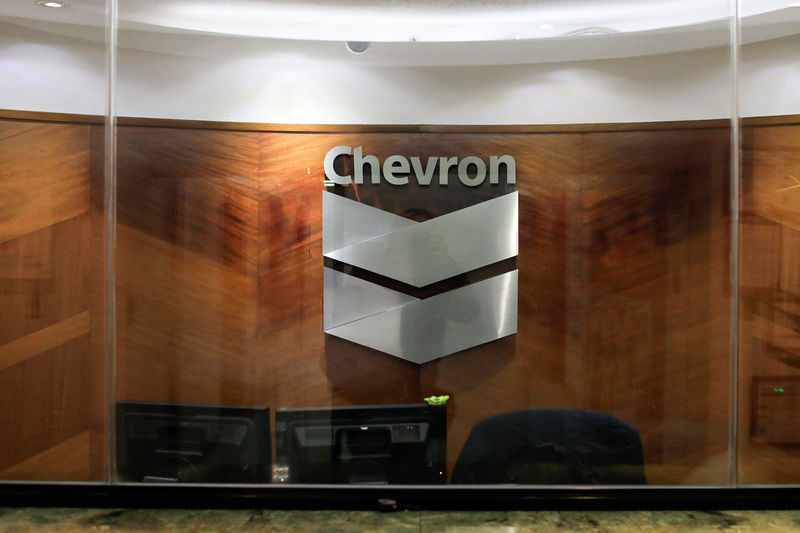This post was originally published on this site
https://i-invdn-com.investing.com/news/LYNXMPEE3O1XJ_M.jpg
Monday’s broad sell-off reflected some nervousness in the energy market, but for these two, the condition faded as trading went on. I remain bullish on energy stocks in general for a variety of reasons, though in this case, I prefer Chevron to Exxon.
Chevron’s stock has enjoyed a very tight price range for the last several months. It’s been between $90 and $110 per share since mid-February. Much of that time it’s seldom strayed more than $5 per share from $100.
While it’s been on a downward slide since June, the angle of descent has been so shallow that it’s hard to notice from one day to the next. (See Chevron stock charts on TipRanks)
Exxon is a fairly similar story. Since mid-February, Exxon share prices have been in the $50 to $60 range. It has cleared the $60 mark several times, but these breakouts seldom last long. Exxon, like Chevron, been on a downward slant since June.
Also likewise, the angle of descent has been extremely narrow to the point it’s hard to notice. (See Exxon stock charts on TipRanks)
The recent broader sell-off that hit energy stocks reflected, among other things, deep concerns out of China. Evergrande’s (EGRNF) potential disaster may have shut down one of China’s biggest real estate operations.
Such a shutdown would send demand for fuel, iron, and several other commodities down accordingly. Fears connected to a complete shutdown seem to be retracting, and that’s giving energy companies some extra breathing room.
Wall Street’s Take
Wall Street consensus analysis calls Chevron and Exxon Moderate Buys.
The average Chevron average price target is $123.36, with a high of $145 and a low of $105. The average price target represents 23.7% upside potential.
The average Exxon price target is $67.85, with a high of $90, and a low of $57. The average price target represents upside potential of 19.3%.
Comparison
While society has been moving toward more renewable sources of energy, the notion that Chevron and Exxon and those like them will be out of the picture any time soon is laughable.
Sure, their importance may drop, but Chevron has been preparing for just such a turn itself. Just weeks ago, Chevron announced a deal with Gevo (NASDAQ:GEVO) to work together to convert otherwise inedible corn into aviation fuel.
Chevron’s CEO also noted that higher energy prices are likely to be a factor for the foreseeable future as few energy firms are reinvesting profits into new production projects. Chevron isn’t, however, getting in on wind and solar. A recent interview with chairman and CEO Mike Wirth revealed that Chevron plans to put cash back in investors’ hands to “let them plant trees” as they see fit.
Exxon’s value, meanwhile, is a bit more likely to drop in the long-term. Exxon has made great strides with its recent push into Guyana, reports note. However, its longer-term bets on sustainability seem to be lacking. Amid calls for Exxon to “pay up” for causing climate trouble, it’s also been recently spotted shutting down attempted green initiatives.
It’s also worth noting that Chevron has an excellent history of increasing quarterly dividends. Exxon’s dividend history shows it raises its dividend much less often. To Exxon’s credit, it has maintained its dividend well.
Concluding Views
Chevron gets you access to an energy operation that’s likely to benefit in the short-term from higher energy prices, but is also moving to ensure its position down the line. Exxon, meanwhile, gives you short-term gains, but exposes you to a bit more long-term risk, for about half the price.
Thus, I’m bullish on both. Both companies are great today, but the pricier Chevron is more likely to be great tomorrow as well.
Disclosure: At the time of publication, Steve Anderson did not have a position in any of the securities mentioned in this article.
Disclaimer: The information contained in this article represents the views and opinion of the writer only, and not the views or opinion of Tipranks or its affiliates, and should be considered for informational purposes only. Tipranks makes no warranties about the completeness, accuracy or reliability of such information. Nothing in this article should be taken as a recommendation or solicitation to purchase or sell securities. Nothing in the article constitutes legal, professional, investment and/or financial advice and/or takes into account the specific needs and/or requirements of an individual, nor does any information in the article constitute a comprehensive or complete statement of the matters or subject discussed therein. Tipranks and its affiliates disclaim all liability or responsibility with respect to the content of the article, and any action taken upon the information in the article is at your own and sole risk. The link to this article does not constitute an endorsement or recommendation by Tipranks or its affiliates. Past performance is not indicative of future results, prices or performance.

